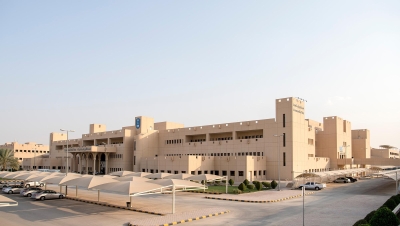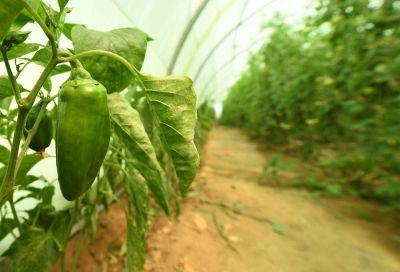
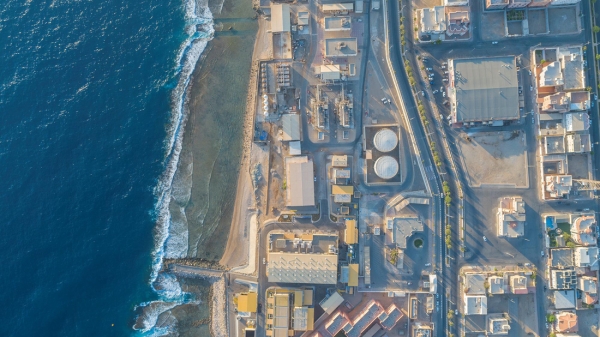
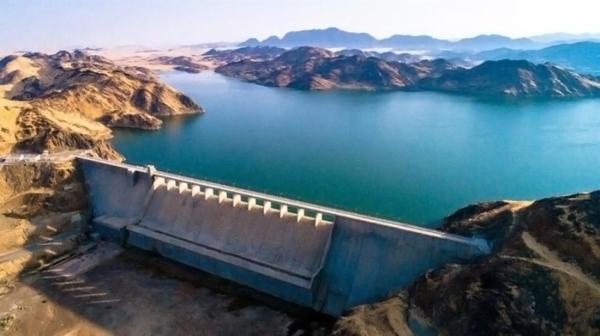
Water in the Kingdom of Saudi Arabia consists of a set of water resources leveraged by the country. The Kingdom relies on several resources to provide water, including: surface water, renewable groundwater, and non-renewable groundwater, in addition to desalinated water and treated water. The Kingdom is the largest producer of desalinated water in the world with about thirty-three production systems located on the eastern and western coasts. Water in the Kingdom is administered as per the Water Law issued in 2020 by a Royal Decree and a resolution of the Council of Ministers. The law states that the desalinated water originates from the sea and has undergone the desalination process.
History of water in Saudi Arabia
The Kingdom owned the first onshore water desalination unit in 1907 when a machine was pulled from a shipwreck on the shores of Jeddah. It functioned using coal and had been previously used in commercial and military vessels to condense and distill salt water to produce fresh water. It was called 'al-Kandasa' from the Latin word that means condensed. Given the Kingdom's geographical location that lacks fresh water, the influx of Hajj and Umrah pilgrims to Jeddah Governorate, and the increased demand for clean water, the Founding King Abdulaziz Bin Abdulrahman Al Saud ordered the import of two more water desalination machines in 1926. In 1965, the General Department for Desalination of Saline Water was founded and affiliated with the Ministry of Agriculture and Water in Jeddah at the time. Subsequently, al-Wajh and Duba desalination plants were established in 1969, followed by Jeddah Desalination Plant a year later, and al-Khobar Desalination Plant in 1973.
The Water Law in Saudi Arabia
The law issued by the Saudi Council of Ministers in 2020 applies to the water sector. It generally aims to develop, protect, manage, and regulate water resources. Moreover, the law ensures the provision of safe, clean, and reliable water supplies to consumers in the Kingdom, as well as sustainable water supply for the agricultural sector.
Water resources in Saudi Arabia
Water resources in the Kingdom are classified into two parts. The first part is conventional water resources, which consist of surface water and (renewable and non-renewable) groundwater, and the second part is unconventional water resources, i.e. desalinated seawater and treated wastewater.
Surface water
It is flowing water that has accumulated in layers near the earth's surface. Surface water that accumulates in the provinces of Makkah al-Mukarramah, Aseer, and Jazan accounts for 73 percent of the Kingdom's total usable dam water. The Kingdom's dams collect 1.6 billion m of exploitable water annually. Surface water is divided into several sections, including:
Valleys
The Kingdom boasts a large number of waterways, mostly formed during the rainy ages. However, their numbers decrease in the south of the Eastern Province, while the Empty Quarter Desert is void of any of these waterways. Their characteristics and lengths vary depending on the environmental and climatic conditions. For example, 'Wadi Rumah,' at a length of 510 km, passes through the provinces of Hail and Qassim, and is the longest valley in the Arabian Peninsula. 'Wadi Bishah' is located in Aseer Province and is about 460 km long, while King Fahd Dam, located within its territory, is the second largest dam in the Middle East. 'Wadi al-Hamd' extends within the administrative borders of al-Madinah al-Munawwarah and Tabuk provinces at a length of about four hundred km. 'Wadi as-Sahba' is located within the administrative borders of Riyadh Province and the Eastern Province at a length of about 380 km. Al-Kharj Agricultural Project, established on both sides of this valley in 1939, was the first agricultural project in the Kingdom. 'Wadi Tathlith' is located within the administrative borders of Aseer Province at a length of 350 km with an average slope of 5 m/km. 'Wadi ad-Dawasir' extends within Riyadh Province at a length of 350 km. 'Wadi Turubah' extends from the Hijaz Mountains to the borders of the Najd Desert at a length of 330 km.'Wadi al-Jizil' extends within al-Madinah al-Munawwarah Province at a length of 280 km. 'Wadi ar-Raka' flows from the mountains of al-Dukhul and Hawamel mountains in Riyadh Province at a length of 280 km. 'Wadi Ranyah' extends within the administrative borders of Makkah al-Mukarramah and al-Bahah provinces at a length of about 275 km, and includes Jaabah bridge.
Lakes
These water bodies fall into two categories: 'natural lakes,' predominantly desert lakes, formed naturally by land formations, precipitation, and gathering water from torrents, and 'artificial lakes,' which are water bodies constructed for tourism, real estate development, or fisheries.
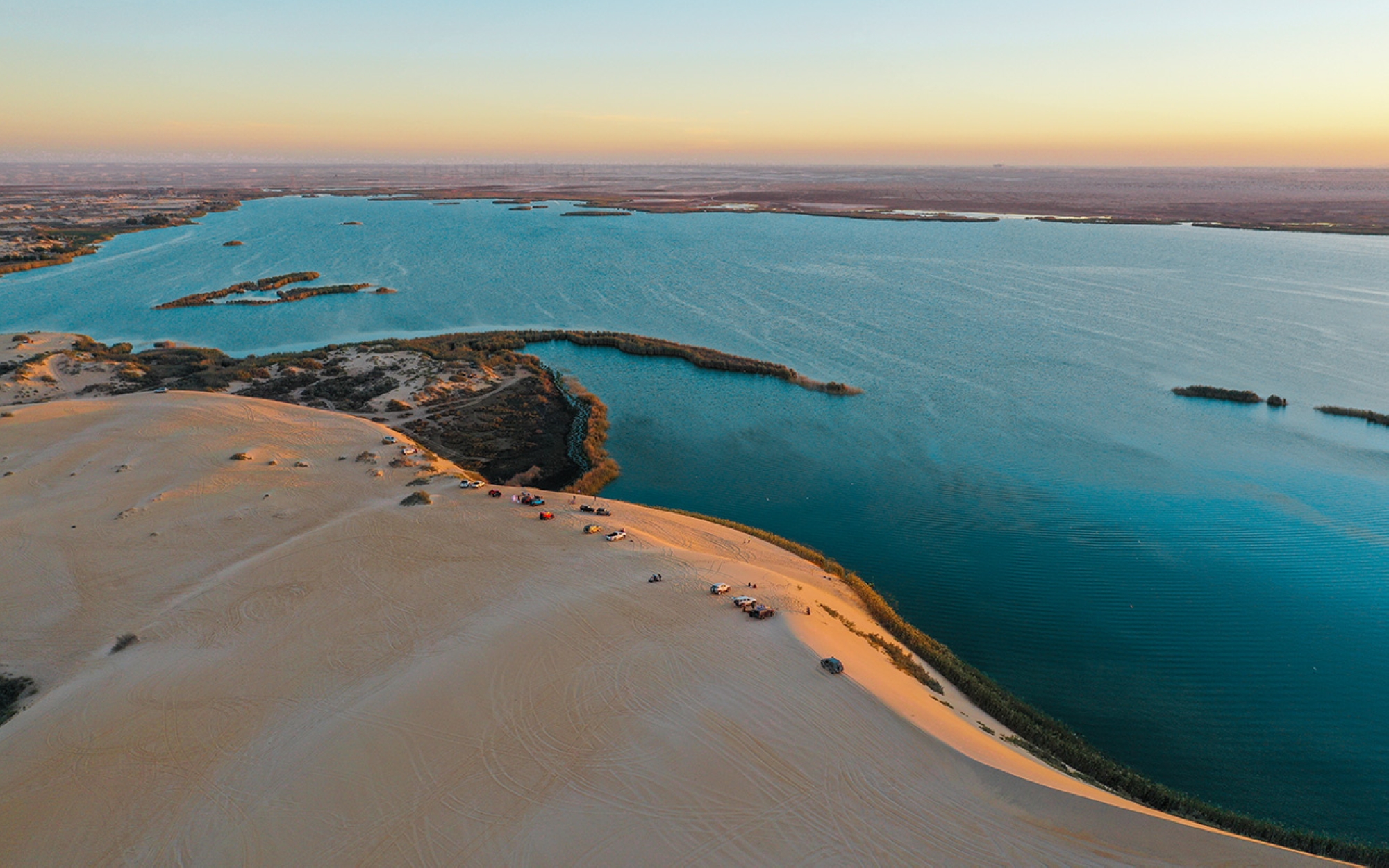
Natural lakes
Natural lakes in the Kingdom are scarce because lakes emerged in the Saudi deserts during rainy periods witnessed by the Arabian Peninsula. However, the climate gradually shifted to a very dry desert climate. These lakes include: 'Asfar Lake,' the largest water body in the Arabian Gulf, located in al-Ahsa Governorate in the Eastern Province, amid sand dunes, at a length of 326 million m. It was formed over the years from seasonal rains and treated drainage water that originated from the governorate's irrigation and drainage project. In 2019, Asfar Lake was classified as a nature reserve by the Ministry of Environment, Water, and Agriculture. Moreover, the Saudi Tourism Authority listed it among more than seventeen tourist destinations in the Kingdom. Asfar Lake is locally called 'the summer blue and the winter white' because its hue changes from a dark color in the summer as a result of increased agricultural drainage into a lighter color in the winter as rainwater filters through. 'Khararah Lake' is located within al-Kharrarah National Park, south of al-Muzahimiyyah Governorate, and west of the city of Riyadh, near Tuwayq Mountain. The lake was formed as a result of the accumulated rainwater in the middle of the sand dunes. Wild Sidr trees and annual plants grow in al-Kharrarah National Park.
Artificial lakes
Seawater naturally feeds artificial lakes when they are nearby or naturally connected to them, maintaining water circulation and quality. These lakes form through excavation, dredging, or with the aid of structures like retaining walls and sheet pile walls. Examples of these lakes include: 'Modon Lake,' one of the largest artificial lakes developed in the Kingdom. It was established by the Saudi Authority for Industrial Cities and Technology Zones (MODON) in Dammam Second Industrial City, Eastern Province. Its area covers around 210,000 m and is surrounded by green landscapes, 760 palm trees, a ten-km walkway, and four-km long footpaths.
Yanbu Lake Park
It is called the 'smart city' lake and is located in Yanbu Industrial City, west of al-Madinah al-Munawwarah Province. It is about three km away from the Red Sea coast and covers an area of 2,982 m² with a capacity of 4,175 m of water. It is fed by fountains that paint the natural landscape as the water flows. Yanbu Lake Park consists of two separate islands, one of which is connected to the outside of the lake by a pier, and the other can be accessed via a wooden bridge. Yanbu Lake Park is surrounded by seating areas, green spaces covering 21,276 m, 373 palm trees, and about 1,590 shrubs, as well as four small waterfalls with night lighting, children's playgrounds, a walkway that spans the entire lake, and 172 car parking spaces, including eight spaces designated for people with disabilities.
Dumat al-Jandal Lake
It collects excess water from the irrigation of agricultural lands in Dawmat al-Jandal Governorate, affiliated with al-Jawf Province. The lake covers an area of around one million m and is about fifteen m deep in the center. Every year, it hosts a sea bike race. Moreover, it is a suitable destination for marine sports and boat rides.
Wadi Namar lake
Located in Wadi Namar Dam Park in Riyadh Province, it spans over two hundred thousand m and is twenty m deep. It includes 892-m long dirt paths for pedestrians and a six-km long road with parking spots on both sides that accommodate eight hundred cars. Moreover, sidewalks in the form of a two-km corniche overlooking the lake have been established, in addition to seating benches overlooking the lake, kiosks, and restrooms. This comes in addition to 10,020 local plants, palms, and trees.
Salam Park Lake
Located in the middle of the southern part of Salam Park in Riyadh City, it spans over 34,000 m and can retain about 110,000 m of water.
The lake was built with layers of paved clay and layers of insulation materials to preserve water. Moreover, certain algae-resistant plants were planted in the lake. The lake is divided into two sections, one for visitors and boating, and the other concerned with the natural ecosystem.
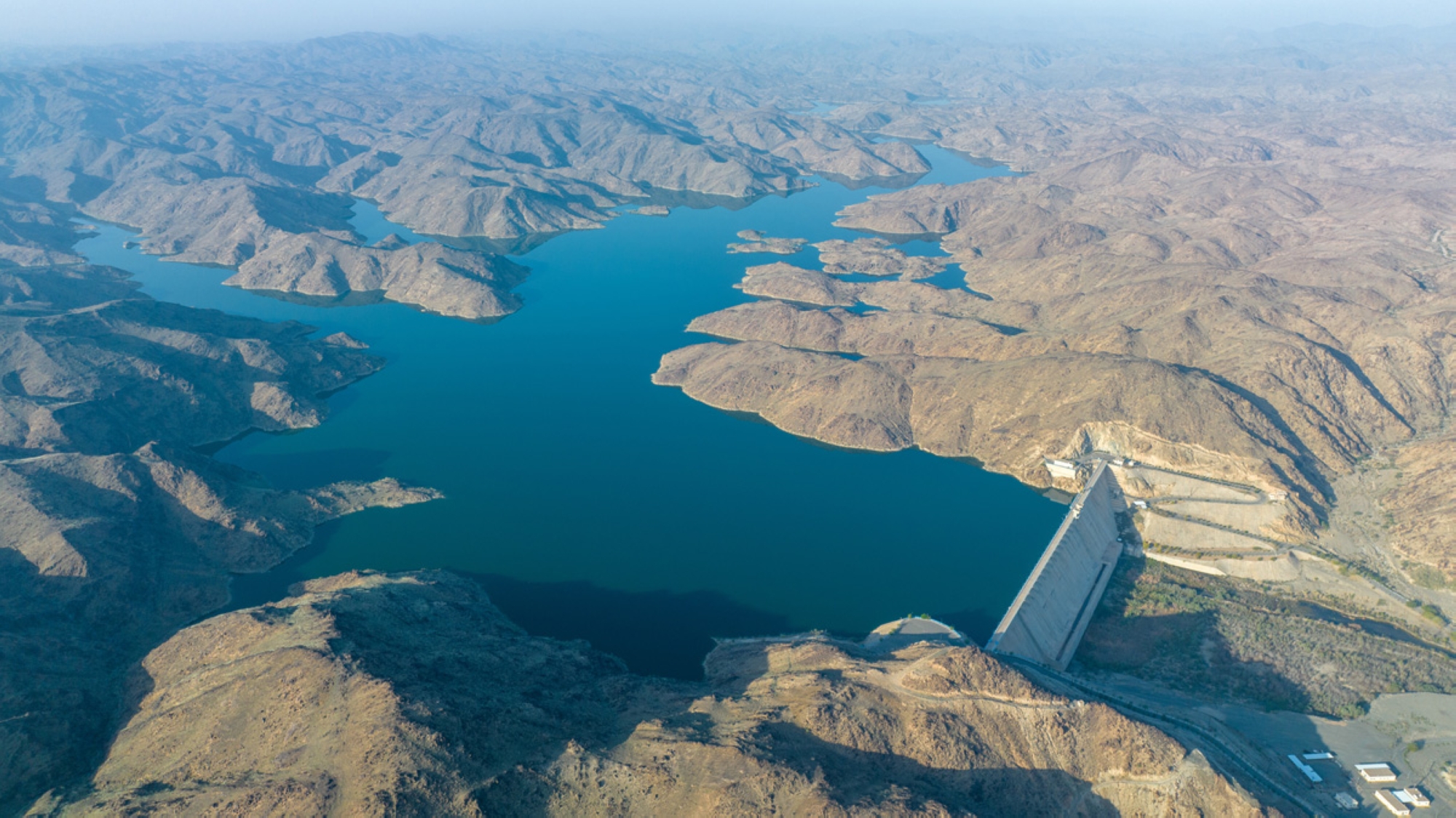
Dams
Dams are among the crucial water resources that the Kingdom depends on to preserve groundwater sources. In 2021, the storage capacity of dams reached about 2,445,854,428 m for 544 dams, including: King Fahd Dam in Bishah, which is one of the largest dams in the Kingdom in terms of size and water storage capacity. It is 103 m high with a storage capacity of 325 million m. 'Wadi Hali Dam' is the second largest dam in the Kingdom in terms of size and water storage capacity after King Fahd Dam. It is located on the western side of the Kingdom, specifically in al-Qunfudhah Governorate, Makkah Al-Mukarramah Province. Its storage capacity is about 254 million m, it is about fifty-seven m high, and stores about 36.5 million m at an annual rate. 'Wadi Bishah Dam,' the third largest dam in the Kingdom, is located in the southwest of the Kingdom, specifically in the northeastern part of Jazan Province. It covers an area of about 340 m and is about 106 m high, while its storage capacity reaches 193.6 million m.
Groundwater
Groundwater is categorized into two types: renewable groundwater, held within rocky aquifers where water naturally accumulates. It's present in both shallow and deep layers across the Kingdom, as well as in surface water within valleys. Moreover, the Arabian-Nubian Shield formations in the west of the Kingdom include renewable groundwater reservoirs in valley sediments and fissured basement rocks, estimated at about 2.8 billion m annually, and are mainly used in the agricultural and urban sectors.
The other type consists of non-renewable groundwater stored in rocky aquifers, where water is not naturally supplied. Only a minimal amount of water reaches it, equivalent to the water volume already stored within it. The Arabian Shelf formations to the east of the Kingdom include non-renewable groundwater reservoirs distributed across various water layers, accumulating in primary and secondary aquifers. These reservoirs span over twenty layers throughout the Kingdom, catering to multiple regions. Sedimentary layers that contain non-renewable groundwater are divided into primary layers: Saq, al-Wajid, al-Tawil, al-Manjur, al-Bayad, al-Wassi', Umm al-Rudm, Dammam, and Neogene, as well as secondary layers: Al-Jilh, Khuff, Dhurma, Marat, Tuwaiq, al-Jubaylah, Hanifah, Arab, al-Sulay, al-Yamamah, Buwayb, al-Arma, Jubbah, al-Jawf, Qassim, Tabuk, as well as the tertiary sediments and basalt layers in lava fields.
Desalinated sea water
Due to the scarcity of water resources, the Kingdom has turned to the desalination of salty seawater, removing dissolved salts to create fresh water suitable for consumption. According to the annual report of the Saline Water Conversion Corporation (SWCC) for 2019, the Kingdom is the largest producer of desalinated water in the world, accounting for 22 percent of the total global production of desalinated water. Its strategic location overlooking the Arabian Gulf to the east and the Red Sea to the west, and its relatively very low levels of rainfall, in addition to the prevalence of the semi-arid to dry desert climate across the Kingdom, explain its dependence on water desalination to meet 70 percent of desalinated water production in the Kingdom. Moreover, the remaining percentage is covered by the other three resources: government wells, private wells, and dams.
According to the annual report data of the SWCC for 2022, the Kingdom's daily production capacity of desalinated water reached 6.6 million m, produced through thirty-three separate production systems between the western and eastern coasts of the Kingdom. The amount of water produced in 2022 exceeded two billion m of desalinated water, transported via pipelines reaching a total length of 11.2 thousand km. The SWCC managed to increase the daily production capacity of desalinated water to 7.9 million m, which is the largest in the world. It also aims to double the lengths and capacities of giant water transportation systems to exceed seventeen thousand km by 2027.
Treated wastewater
Treated water is an important resource in the Kingdom due to water scarcity. It can be used in different areas, including: irrigation of gardens and parks, industrial processes, refrigeration, agriculture, and some industrial purposes. Wastewater is treated in 133 plants distributed across the Kingdom’s provinces. Riyadh Province has recorded the highest number of treatment plants with twenty-six plants, followed by Aseer Province with twenty treatment plants and the Eastern Province with nineteen plants. According to the statistical report issued by the Ministry of Environment, Water, and Agriculture, the volume of treated wastewater for 2021 reached about 1,875,126,925 m, with an average of 5,137,334 m/day. On the other hand, the volume of reused treated wastewater reached about 418,735,193 m, of which 400,444,724.45 m is used annually in agriculture. The share of reused treated water in 2021 amounted to about 22.35 percent of the total treated water.
Water desalination production in Saudi Arabia
The process of seawater desalination to address shortages and cater to the rising water demand is managed in the Kingdom under the Water Law issued in 2020 by a Royal Decree and a resolution of the Council of Ministers. The Law states that desalinated water is water sourced from the sea that undergoes desalination treatment.
Key water production systems in Saudi Arabia
The Kingdom has around thirty-three production systems located on the east coast and west coast, including Jubayl production system, Shu'bah production system, Ras al-Khayr production system, Yanbu production system, al-Khobar production system, Jeddah production system, Duba production system, al-Shuqaiq production system, Khafji production system, al-Lith production system, Ummlujj production system, al-Wajh production system, Farasan production system, Haql production system, Aziziyah production system, Rabigh production system, and al-Qunfudhah production system.
Mobile plant
To keep pace with Saudi Vision 2030 in enabling local content and supporting national competencies, SWCC, represented by its technical and engineering staff, was able to implement the mobile plant according to the latest international specifications and standards. This plant aims to reduce operational costs and achieve profitable financial returns. Moreover, the plant uses reverse osmosis technology with a production capacity ranging from two thousand m to ten thousand m of desalinated water per day. It also adopts pioneering technologies and innovative design philosophy, such as High-Pressure Pumps (HPPs), Energy Recovery Devices (ERDs), and a professionally designed and manufactured portable water outlet system.
Definition of water desalination technologies in Saudi Arabia
They are technologies used by the Kingdom to provide fresh water. The operations of the first onshore water desalination unit began in Jeddah Governorate.
Goal of water desalination technologies in Saudi Arabia
Water desalination technologies in the Kingdom aim at separating salts and sterilizing water to become fresh and suitable for drinking and human use, or to produce distilled water.
Types of water desalination technologies in Saudi Arabia
Five types of technologies are used to desalinate water in the Kingdom: multi-stage flash evaporation technology, reverse osmosis technology, multiple-effect distillation, zero liquid discharge technology, and nanomembrane technology.
Multi-stage flash evaporation technology
Since the beginning of the 1950s, plants have been constructed to distill water under low pressures with a capacity ranging between four thousand and thirty thousand m of water. During this process, the water is boiled without the need for thermal energy. The multi-stage flash evaporation technology relies on the heating of seawater, which passes through a heat exchanger known as a 'brine heater' until the steam is condensed on the surfaces of the brine heater tubes. Subsequently, the hot water is transported to a low-pressure vessel called the 'evaporator,' which causes the water to boil quickly and instantly until a small volume turns into water vapor. The process is repeated several times at different pressure levels until the water reaches a cold temperature, resulting in the required evaporation temperature to reach the boiling point.
Multi-effect evaporation
Multi-effect evaporation entails several stages. After the salty seawater is purified and chemically treated, it passes through rows of tubes arranged horizontally in a heat exchanger where the steam is condensed to form the distilled water. Moreover, condensing the steam raises the boiling point of the water and separates the water from the minerals. Consequently, the minerals pass through their dedicated pipes, while the distilled water passes through other pipes. The evaporation and condensation processes are repeated depending on the number of effects in the system.
Reverse osmosis technology
During the 1970s, reverse osmosis technology circulated commercially. The technology is modern compared to distillation and dialysis. It is composed of four stages. The 'first stage' begins with the initial treatment in which the plankton and living organisms are removed from the water to prevent any sedimentation and growth on the membranes. The water to be purified passes through narrow channels before injecting it with chemicals and acids. During the 'second stage,' the water is transported through a high-pressure pump, which allows only the water to pass through and prevents the passage of minerals through the membranes. The pressure ranges from seventeen to twenty-seven bar for well water, and from fifty-four to eighty bar for seawater. The 'third stage' involves the membrane complex, which is characterized by specific criteria, including: the membranes' ability to withstand the pressure difference in the vessel, retain salts, and regulate the flow of fresh water passing through them. Reverse osmosis membranes vary depending on the quality of the water to be desalinated. Due to the lack of a tight membrane capable of retaining the salts completely, and the possibility of it breaking, some minerals may remain in the produced water. Nonetheless, there are instances of commercially successful membranes, such as the hollow microfilament membrane and the helical plate.
The 'fourth stage' is the final treatment stage, during which the chemical properties of the water are maintained, the gases are eliminated, such as hydrogen sulfide, alkalinity is improved, and the water is prepared for distribution. During the past decade, the technology has developed in terms of improving the efficiency of the membrane to operate at low pressure, which is mainly leveraged in the desalination of well water. Due to the difference in the pressure of the water coming out of the pressure pump and decreasing from one to four bar, energy recovery methods have been developed to convert pressure differences into kinetic energy.
Zero liquid discharge technology
Zero liquid discharge is an environmentally friendly technology. It aims at extracting the most important salts and minerals from the brine waste stream, thus increasing the extraction rate of produced water to 70 percent. Salt brine contains several minerals, including: magnesium, calcium, sodium chloride, bromine, lithium, potassium, and sulfate.
Nanomembrane technology
Nanomembrane technology is the initial treatment that uses membranes with extremely small pores. This technology is characterized by its ability to eliminate unwanted elements to maximize the benefit from brine. Nanomembranes are characterized by their ability to operate under low pressures, which reduces operational costs by up to 50 percent (such as energy consumption).
Water consumption in Saudi Arabia
The total demand for water in the Kingdom increased from 13,809 million m to 14,264 million m between 2020 and 2021. Consumption of the urban sector amounted to about 3,556 million m, the industrial sector about 628 million m, and the agricultural sector about 11.4 billion m.
Drinking water consumption in Saudi Arabia
In 2021, water consumption in urban areas in the Kingdom amounted to about 3,556 million m. Riyadh Province topped the Kingdom's provinces in terms of the amount of water consumed at about 1,126,030,238 m, followed by Makkah al-Mukarramah with around 831,766,167 m of the total consumption in the Kingdom for 2021.
Number of water subscribers in Saudi Arabia
About 2,087.94 thousand subscribers were registered for water services in 2021. Riyadh Province topped the list in terms of the number of subscribers with about 672.95 thousand subscribers, followed by the Eastern Province in second place with around 361.29 thousand subscribers, and Makkah al-Mukarramah Province with about 351.63 thousand subscribers.
Addressing water scarcity in Saudi Arabia
The Kingdom is among the top five countries suffering from scarcity of water resources. Consequently, the Ministry of Environment, Water, and Agriculture launched the 'National Water Strategy 2030' in 2018, which aims at raising the quality of water and sanitation services, preserving current financial resources, and achieving water security by ensuring access to sufficient quantities of water, especially in emergencies.
The strategy is a comprehensive work system that ensures the sustainability of the water sector in the Kingdom, develops and preserves water resources, provides high-quality services, and contributes to economic and social development. The strategy aims at preserving and ensuring the proper use of existing water resources, as well as raising the quality of water and sanitation services and achieving water security by accessing sufficient quantities of water in normal and emergency situations. This strategy represents an integrated water plan that lays the foundations for an ecosystem that develops the infrastructure. Moreover, it addresses all the major challenges of the water and sanitation sector in the Kingdom by establishing comprehensive structural institutional frameworks, providing enabling mechanisms, and drawing up effective implementation plans.
Water projects in Saudi Arabia
The number of new projects until 2022 reached about 1,429, with a value exceeding SAR108 billion, distributed among thirteen administrative provinces of cities and governorates across the six sectors distributed as follows: the 'Western Sector,' Makkah al-Mukarramah Province, with 353 projects worth more than SAR38.96 billion, the 'Eastern Sector,' Eastern Province, with 117 projects worth more than SAR16.17 billion, the 'northwestern sector,' al-Madinah al-Munawwarah and Tabuk provinces, with 162 projects worth more than SAR7.7 billion, the 'Northern Sector,' Qassim, Hail, al-Jawf, and the Northern Borders provinces, with 215 projects worth more than SAR12.95 billion, the 'Southern Sector,' Aseer, Najran, Jazan, and al-Bahah provinces, with 328 projects worth more than SAR15.3 billion, the 'Central Sector,' Riyadh Province, with 240 projects worth more than SAR14.19 billion, in addition to fourteen projects worth more than SAR2.72 billion to support various sectors.
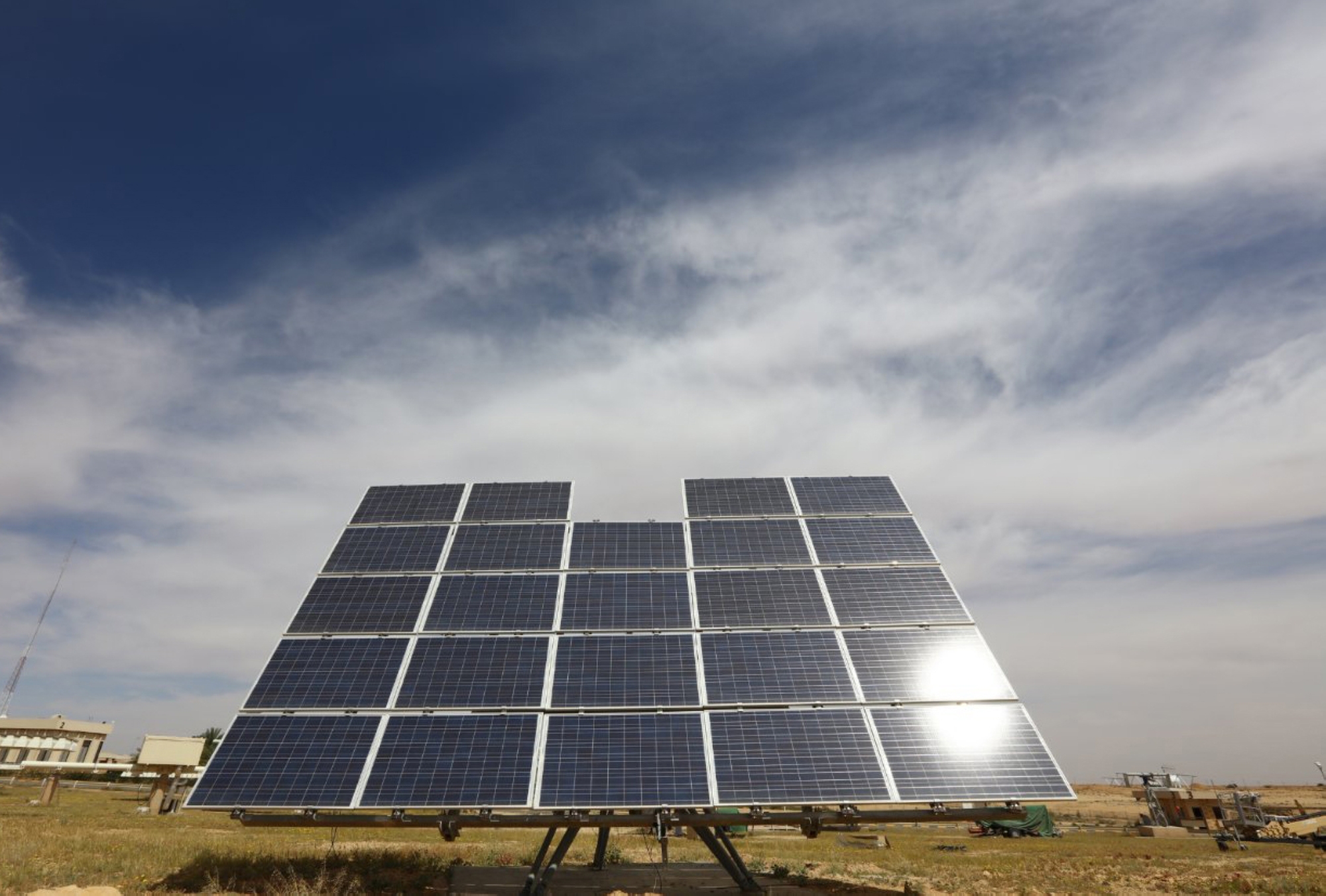
Adsorption desalination plant
This plant seeks to achieve the principle of zero brine, reduce the negative impact on the environment resulting from the operation of desalination plants, and increase overall efficiency by establishing a water desalination plant based on absorption cooling technology and industrial-scale salt crystallization. It produces about five thousand m of desalinated water daily and reduces 3.7 t of carbon emissions annually. The plant was inaugurated on February 21, 2017, in al-Uyaynah, which is administratively affiliated with ad-Diriyyah Governorate. The adsorption desalination cum cooling (ADC) systems, located at the adsorption desalination plant, match Asian and Middle Eastern countries, especially Gulf countries, in the fields of water desalination, cooling, and air conditioning, as these systems operate on the heat generated by solar energy, or waste heat from power plants and oil and gas refineries.
The plant aims to achieve sustainable development in the water sector, improve water resources, and preserve the environment by developing expertise to benefit from the use of direct renewable energy in water desalination and thermal desalination. Moreover, this plant seeks to test the zero-brine principle from the economic, technical, scientific, and practical aspects, in addition to proving the efficiency of this scientific precedent within a desalination plant in a small industrial field and cooperating with local institutions and universities, as well as a global partner, to localize and transfer new water technologies and utilize national capabilities and the national local content. The adsorption desalination plant needs electricity and heat for its operation. Therefore, it fully relies on solar, renewable, electrical, and thermal energy. It consumes about 3.5 MW of thermal energy and approximately 1.5 MW of electrical energy to generate five thousand m of desalinated water and seven hundred kg of salt daily.
Saudi Arabia's saltwater desalination project using solar energy
As part of the initiative of the Custodian of the Two Holy Mosques to desalinate saltwater using solar energy, the implementation of a saltwater desalination project using solar energy has begun in the Kingdom to leverage its solar resources and address water scarcity. It was inaugurated in 2018 by Crown Prince and Prime Minister, His Royal Highness Prince Mohammed Bin Salman Bin Abdulaziz Al Saud. The project seeks to position the Kingdom as the global leader in solar water desalination, reduce pressure on the Kingdom's natural oil resources, lower the cost of water desalination per m, reduce harmful emissions, raise the quality of life, and transfer and localize advanced technologies for reverse osmosis membranes, concentrating cells, and dust-repellent surfaces.
The economic and environmental sector is affected by the saltwater desalination project using solar energy, which leads to a reduction of a high percentage of carbon emissions resulting from desalination, cooling, air conditioning, and energy production operations. Moreover, the project relies on renewable energy, reduces carbon emissions, and supports the economy by lowering the costs of redirecting natural energy for sale to the global markets to increase profit. The project includes two substations, the 'first station' desalinates water using reverse osmosis technology. It is distinguished by the use of technologies developed by King Abdulaziz City for Science and Technology, leading to a more efficient desalination of water and a lower cost. The daily desalination capacity of the plant reaches sixty thousand m and can be increased to ninety thousand m per day. The 'second plant' produces electrical energy using solar photovoltaic panels, which supply the desalination plant with ten MW of electricity per day. The project includes five sub-projects, they are:
- Ultrapure water desalination project, using multi-stage reverse osmosis technology.
- High-efficiency concentrated solar cells project.
- Smart meters and central inverters project for power grid connection.
- Dust-repellent nano-surfaces project to protect solar panels' surfaces.
- A project to develop a manufacturing line for solar cells and panels.
Water infrastructure in Saudi Arabia
Through the National Transformation Program 2020, Saudi Vision 2030 seeks to expedite infrastructure works, which includes expanding the coverage of water services in the Kingdom to 92 percent through the delivery of drinking water to consumers initiative launched in 2017 by the Ministry of Environment, Water, and Agriculture, in cooperation with the National Water Company. Another initiative is the Sanitation Services Program, which is concerned with increasing the coverage of sanitation services in the Kingdom to 65 percent.
The SWCC and the private sector provide more than 65 percent of desalinated water, owning around twelve million m of networks, 65 percent of which are designed for desalinated water. By 2030, the water demand will increase to eighteen million m, 90 percent of which will be generated from desalinated water. The ministry has projects under implementation worth up to SAR90 billion. A number of them have been launched and entered into service, with their budget value reaching SAR40 billion. Moreover, several other projects amounting to SAR145 billion were approved, as well as large investments to deliver services to citizens.
Water consumption rationalization in Saudi Arabia
Rashid initiative
With the support of the National Program to Rationalize Water Consumption, the Saudi National Water Company launched the Rashid initiative in 2019 to reduce water consumption in the homes of one thousand customers facing high water consumption, in addition to detecting and repairing defects that lead to water leakage inside homes, installing approved water consumption rationalization tools for free, and monitoring consumption. The initiative aims at supporting and increasing involvement in learning ways and means of preserving water resources inside homes, as well as raising the level of awareness on the importance of periodic inspection of real estate. Moreover, it seeks to spread the culture of rationalization and identify its environmental, financial, and social impact, as well as the financial return and increased water availability as a result of reduced water consumption. By working and analyzing the results of the initiative on a thousand homes, the Rashid initiative has proved that 93 percent of homeowners suffer from internal leaks in their homes, which has led to a sudden increase in their water consumption bills. After addressing the leaks and installing rationalization tools, the initiative, in cooperation with homeowners, was able to save water by 46 percent. Prior to the initiative, the monthly consumption per home reached about 4.59 m per day before reducing to 2.48 m per day after the initiative.
Qatrah Program
In an attempt to achieve water sustainability, the Minister of Environment, Water, and Agriculture launched the national 'Qatrah' Program on March 17, 2019, which is part of the National Transformation Program to be implemented by the water sector following the goals of Saudi Vision 2030. This program seeks to preserve water in the Kingdom, rationalize its consumption, reduce per capita consumption per day from two hundred L to 150 L by 2030, improve people's usage of water, increase water awareness, and achieve sustainability of water resources. It currently falls under the umbrella of the National Water Efficiency and Conservation Center. On December 15, 2022, the Qatrah Program launched the 'use it consciously' campaign to promote a culture of water rationalization, choose a suitable behavior when consuming water to ensure its sustainability, and achieve Saudi Vision 2030.
The National Water Efficiency and Conservation Center (MAEE)
On February 2, 2021, the Council of Ministers issued a resolution to establish the National Water Efficiency and Conservation Center (MAEE), which is an independent center concerned with increasing water resources efficiency, production, transportation, and distribution processes, and rationalization by consolidating activities and efforts between governmental and non-governmental entities. The center aims at achieving water sustainability through diverse national initiatives and programs. It carries out several tasks, such as providing national programs for water efficiency and rationalization, setting indicators and goals, and developing plans, while taking into account the implementation of steps and the verification of their results. The center also cooperates with relevant entities in preparing periodic reports on water production, consumption, efficiency, and rationalization, issues technical regulations, standards, and procedures that achieve water efficiency and rationalization, reuses greywater through incentive procedures and mechanisms, and sets the necessary rules related to water efficiency and rationalization tests with the relevant entities. Furthermore, MAEE organizes awareness campaigns, seminars, conferences, and exhibitions related to water efficiency and rationalization, and standardizes devices and equipment to achieve efficiency and water rationalization.
The center launched the smartphone application 'Kashf,' which aims to provide appropriate solutions to detecting water leakage inside the homes of citizens and residents in line with the Kingdom's digital transformation process. The app connects beneficiaries with the service providers of Kashf who are qualified by MAEE. The app's advantages include revealing water leakage in the users' homes by institutions and companies, allowing customers to choose the suitable company to carry out the leak detection process, in addition to providing a detailed report to the client after completing the inspection. The center has also offered several initiatives to rationalize water consumption, including: the 'invisible consumer' initiative, which was launched on December 25, 2022, and aims to raise awareness of the importance of periodic inspection inside homes, and repair leaks that cause increased water consumption to reduce water waste. Another initiative is 'save it for tomorrow,' which was launched on May 28, 2023, with the participation of many government entities, and aims to raise awareness of water preservation and support optimal usage behaviors to ensure the sustainability of water resources.
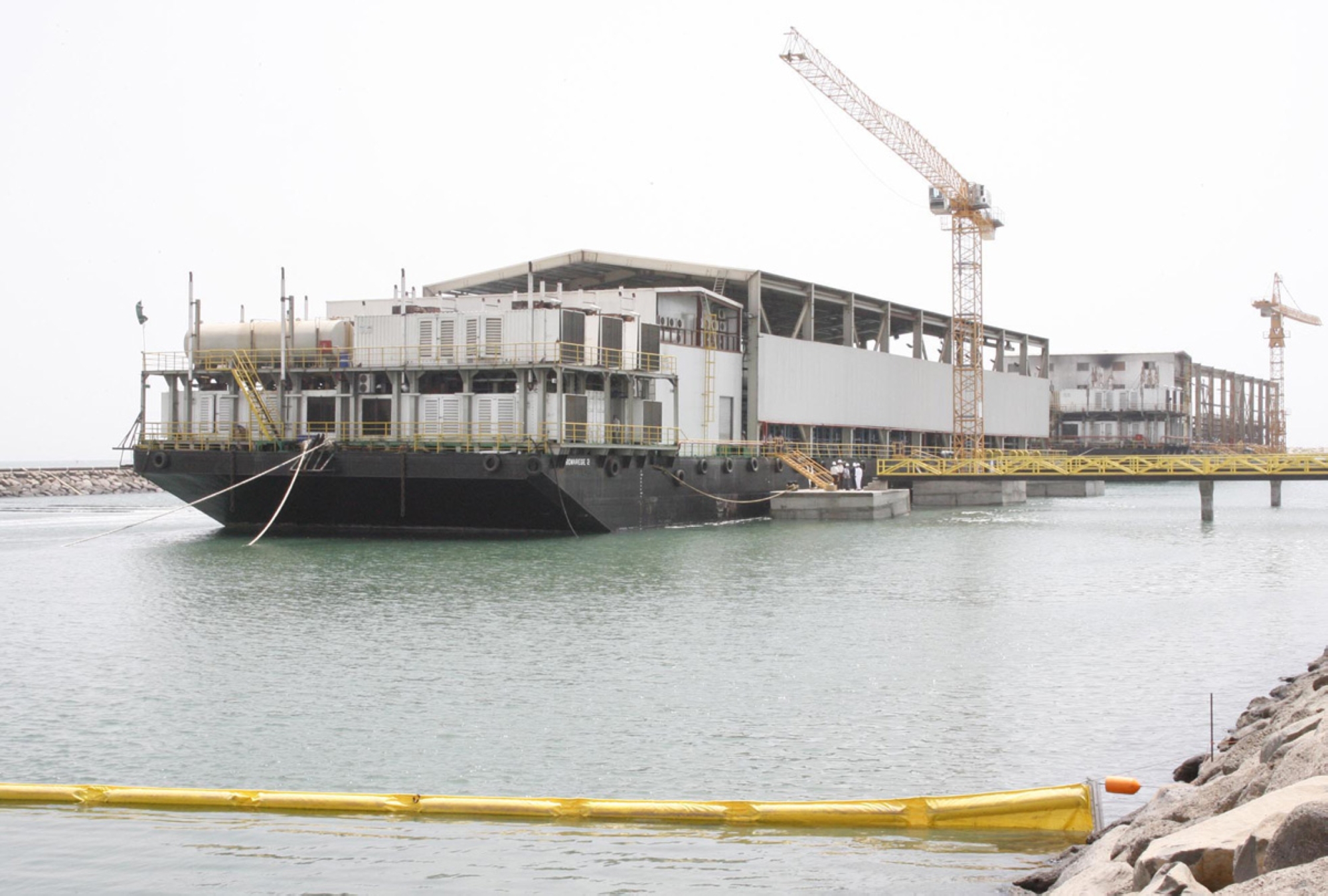
Entities and laws related to water in Saudi Arabia
The Saudi water sector is supervised by the Ministry of Environment, Water, and Agriculture. It offers water and sanitation services through the National Water Company, while the SWCC specializes in seawater desalination.
Saline Water Conversion Corporation (SWCC)
It is a Saudi government entity, established on September 7, 1974, and headquartered in Riyadh City. It manages, operates, and maintains water desalination plants, and is responsible for reproducing and desalinating seawater, as well as delivering it to various cities and governorates across the Kingdom. Moreover, the SWCC generates electricity through its plants. SWCC has set a world record in the Guinness World Records for the lowest energy consumption in a water desalination plant with 2.27 kWh per m³ of desalinated water in the new desalination plant.
Saudi Irrigation Organization
It is a Saudi government entity that manages and operates the irrigation activity and development in the Kingdom. It assumes all responsibilities and tasks related to irrigation. Established in al-Ahsa Governorate in 1970 during the reign of King Faisal Bin Abdulaziz Al Saud, it was known as the Irrigation and Drainage Authority. On May 22, 2017, the Council of Ministers issued a resolution to change its name to the Saudi Irrigation Organization. Its scope of work has expanded to include providing irrigation and agricultural drainage services in all provinces of the Kingdom. The branches of the Saudi Irrigation Organization are located across the capital, Riyadh, al-Madinah al-Munawwarah, al-Aflaj, al-Qatif, and Dawmat al-Jandal.
The Saudi Irrigation Organization seeks to expand unconventional water resources and supply water to the agricultural, industrial, and urban sectors, in addition to raising the level of water quality and expanding the coverage of the water network throughout the Kingdom, while ensuring that it conforms to local and international standards. Moreover, the organization promotes the sustainability of small farm production by providing training initiatives, leverages water sources with minimal costs by developing the network infrastructure, and educates the public on beneficial ways to use unconventional water resources and treated wastewater. The Saudi Irrigation Organization runs several projects, including: the water consumption reduction initiative for agricultural purposes, the increased dam water usage initiative for agricultural purposes, modern agricultural irrigation projects, the irrigation water transmission and distribution system and leveraging the main conveyor line for treated water in Aseer Province, and the construction of two tanks in Sector No. (ten) with all its facilities at Sweidrah Station in al-Ahsa Province. During the irrigation process, the organization relies on several resources, including:
- Reused agricultural wastewater for irrigation in al-Ahsa project.
- Groundwater: It accounts for about 10 percent of the total amount of irrigation in al-Ahsa project and around 50 percent of the total amount of water from irrigation in the Qatif project. Moreover, al-Jawf and al-Aflaj projects entirely depend on groundwater.
Saudi Water Academy
A Saudi educational institution, affiliated with the SWCC. It provides training services to recent graduates and employees in the engineering, technical, and technological fields, as well as employees of other sectors from outside the corporation. In 1982, the SWCC established two training centers in Jeddah and Jubail governorates to train and qualify national cadres. In 2019, the academy was inaugurated and its name was changed to the Saudi Water Academy.
The academy implements several training programs, including qualification programs, such as: the diploma program for technicians and operators, specialists in reverse osmosis plants for water desalination. Moreover, the academy offers development programs in several fields, such as: electricity 'battery maintenance and technologies,' water 'water resources management,' and energy and renewable energy 'combined cycle power plants technology.'
The Saudi Water Academy has offered many training courses and programs that have included 5,680 training programs, thus granting 63,050 certificates, with about 43,050 enrolled trainees. In 2020, the academy was accredited by the International Accreditors for Continuing Education and Training (IACET), as well as the National eLearning Center in 2022. The academy has partnered and cooperated with many local and international entities, including: Saudi Aramco, the National Water Company, the Saudi Council of Engineers, the Saudi Irrigation Organization, and the National Company for Mechanical Systems.
Saudi Water Partnership Company (SWPC)
It is a government company fully owned by the Ministry of Finance. It is the main buyer of water in the Kingdom and the mediator between the private and public sectors in the field of water and electricity in the Kingdom by purchasing projects from the private sector and selling them to the SWCC. The Saudi Electricity Company was founded in Riyadh in 2003 and performs several tasks, including: offering plants and projects for saltwater desalination, water purification, wastewater treatment, and cogeneration to the private sector. The company also offered water tank projects and dam construction projects to provide drinking water, in addition to offering network and transmission lines for all types of water. Moreover, it buys and sells desalinated, purified, treated, and untreated water and electricity, and concludes the required agreements, in addition to buying the needed fuel to achieve its purposes.
In 2002, the Supreme Economic Council at the time issued a resolution to establish the Saudi Water Partnership Company between the Saudi Electricity Company and the SWCC, each owning 50 percent of the company. In 2017, a ministerial resolution was issued expanding the scope of the company's work to include the purchase of desalinated, purified, treated, and untreated water.
The company implemented many projects, including: the Independent Sewage Treatment Plant in Taif with a capacity of one hundred thousand m per day, Shuaibah Two Water Development Project Company with a capacity of 250,000 mper day in 2019, Shuqaiq Water and Electricity Company with 212,000 m per day in 2011, Shuaibah Water and Electricity Company with a capacity of 880,000 mper day in 2010, and Shuaibah Expansion Project Company with a capacity of 150,000 m in 2009.
Water developments in Saudi Arabia
In 2023, the Kingdom announced that it has allocated a budget exceeding USD80 billion to implement hundreds of water projects in the coming years, as part of its endeavor to achieve comprehensive and equitable access to safe and affordable drinking water for all.
The water system’s efforts increased the volume of strategic water storage by 60.2 percent, from 13.60 million m in 2016 to 21.80 million m in 2023, in addition to enlarging the length of water distribution networks in different provinces of the Kingdom, from 113.48 thousand km to 127.84 thousand km at 12.6 percent. It also achieved a 96 percent increase in the continuous pumping of drinking water, from 10.50 h/day to 20.56 10.50 h/day.
The system was also able to increase home supplies by 25 percent from about two million supplies in 2016 to more than 2.50 million in 2023. The installation of electronic water meters expanded from 116,000 electronic meters to more than 2.20 million, an increase of more than 1,600 percent. Moreover, the number of water service beneficiaries increased from about 25.66 million to 31.47 million in 2023 at a 22.6 percent increase rate since 2016.
In an attempt to develop water services in the Kingdom, the establishment, operation, and maintenance of dam water and groundwater purification plants were transferred in 2023 from the National Water Company to the SWCC, within the context of improving and promoting water sector services, and raising the efficiency, transparency, and governance of supply chains in the Kingdom.
As an extension of the Kingdom's pioneering role across the world, the Crown Prince and Prime Minister, His Royal Highness Prince Mohammed Bin Salman Bin Abdulaziz, announced in 2023 the Kingdom's establishment of an international water organization based in Riyadh. The organization seeks to develop and integrate the efforts of countries and organizations in addressing water challenges more comprehensively by exchanging and enhancing technological experiences, innovation, research, and development, in addition to establishing priority quality projects and facilitating their financing, to ensure the sustainability of water sources and improve universal access to water.
Related quizzes
